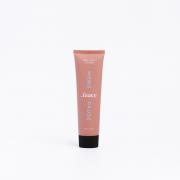With the help of The McIndoe Centre in East Grinstead, we take a look at some skin cancer symptoms, signs of skin damage, the treatment/mole removal on offer and ways to protect yourself from the sun
Before we delve into some of the signs of skin damage, skin cancer symptoms, and suspicious moles, it’s important to recognise the steps you can take to protect yourself.
How to protect yourself from the sun
Whilst vitamin D is important – a lack of it can cause skin to thin whilst making it brittle and dehydrated – it’s vital to avoid overexposing yourself to sunshine. The sunlight reaching your skin is composed of ultraviolet A (UVA) and ultraviolet B (UVB). UVA damages elastin therefore accelerating the signs of ageing (elastin is a component of our skin which keeps it looking younger). On the other hand, UVB damages the superficial layers of the skin and is responsible for the majority of sunburn. According to Cancer Research UK, “getting sunburn, just once every 2 years, can triple your risk of melanoma skin cancer.”
What are the types and signs of sun damaged skin and can they come and go?
One of the clearest signs of sun damaged skin and a big warning sign is of course sunburn. Sunburn lasts for a relatively short period of time and is often itchy before it peels and eventually heals. It is important to mention that sunburn doesn’t have to be severe (raw or blistered) you can still be sunburnt even if you’re just a little pink or red.
Rough patches of irregular, scaly and sometimes itchy skin measuring approximately 3mm in diameter is known as actinic keratosis. This can be a sign of sun damaged skin and is commonly found on the forearms, lower legs, face, balding scalp, ears and neck. According to the British Association of Dermatologists, this form of sun damage can progress to skin cancer but this risk is very small.
What are the types and signs of skin cancer and can they come and go?
Atypical moles are common but at the same time, it’s vital to watch for any changes to the shape, surface or colour. In some cases, doctors may recommend mole removal where melanoma could be a risk.
Other forms of skin cancer include squamous cell carcinoma, melanoma and basal cell carcinoma. There are also rarer types of non-melanoma skin cancer. For an in-depth explanation of the signs and symptoms, click here.
A warning sign of skin cancer and the most common symptom of the disease are changes in moles or freckles (gradual or sudden) such as them becoming itchy or raised. Click here to find out more.
Melanomas are identified as suspicious or irregular new moles, or an existing atypical mole that has changed in colour, shape or appearance. Left untreated, these cancerous moles can develop and spread in to other organs in your body. Moles can often appear in places you wouldn’t usually expect, like the back of the legs, bottoms of your feet, palms of your hands and your eyelids, so it is important to check yourself regularly.
Spotting the early signs of skin cancer is much easier if you’re familiar with your skin. Regularly check yourself in the mirror and take pictures of your moles so any changes will stand out to you. It is a good idea to place something like a small coin next to the mole as a point of comparison.
The McIndoe Centre has more information on the signs and symptoms of skin cancer here.
What skin cancer/damage treatment is available and is it expensive?
The treatments for skin damage, melanoma and other skin cancers at The McIndoe Centre start at £410 - although this is a guide price – and generally covers skin lesion and mole removals.
A partial mole removal, otherwise known as a shave biopsy, involves an incision at the base of a lesion that is sticking out; essentially shaving it off the skin. Direct removal is the complete removal of a mole or lesion and some surrounding skin. Sometimes you can successfully remove early skin cancer non-surgically with a topical cream. A technique called MOHs surgery is also available exclusively at The McIndoe Centre, this is when the skin cancer is removed a layer at a time until all the cancer cells are gone.
Find out more at www.themcindoecentre.co.uk.



























